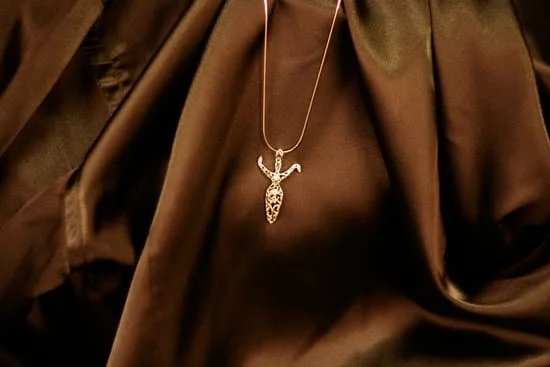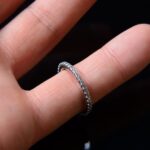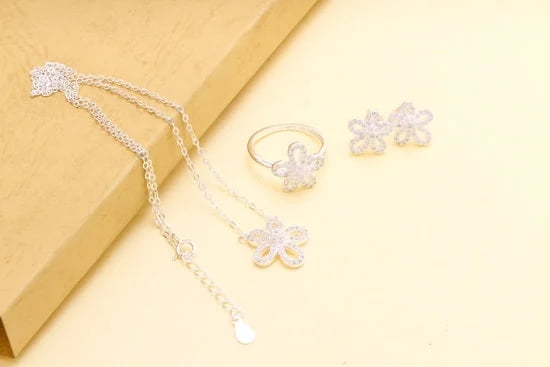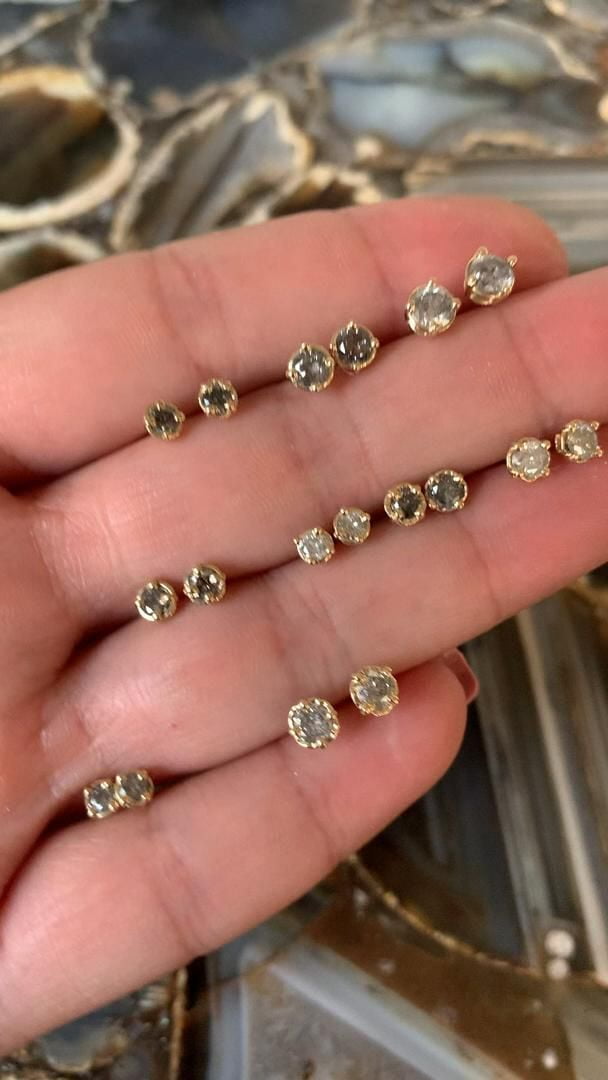Diamond jewelry is a popular and highly sought-after luxury item, but have you ever wondered how much of its cost is actually markup? In this article, we will delve into the typical markup on diamond jewelry and explore the factors that influence pricing. Understanding the pricing strategy behind diamond jewelry is essential for consumers to make informed decisions and ensure they are getting the best value for their money.
The diamond market is complex and can be influenced by various factors. From the mining process to cutting and polishing, diamonds go through multiple stages before reaching the retail store. Each stage incurs costs, which ultimately affect the final price tag on the jewelry. By understanding these stages and associated costs, consumers can gain insight into the structure of diamond markup.
Factors affecting diamond jewelry markup range from overhead expenses of sourcing and processing diamonds to supply chain management. It is important for consumers to be aware of these factors in order to assess if they are paying a fair price for their desired piece of jewelry. Knowing industry standards and benchmarks for markup on diamond jewelry allows customers to compare prices across retailers and evaluate whether a particular purchase offers good value.
In this article, we will also examine price disparities among different types of diamond jewelry, such as engagement rings or necklaces. Different designs, settings, and gemstone characteristics can contribute significantly to variations in markup. Furthermore, we will compare markups between traditional brick-and-mortar stores and online retailers to help readers understand which purchasing option may offer better value.
By gaining knowledge about the pricing strategy behind diamond jewelry, consumers can become more confident in their purchases. In the following sections of this article, we will explore the various aspects of diamond markup, provide tips on assessing it before making a purchase, and empower readers with information that enables them to make educated choices when investing in a precious piece of diamond jewelry.
Understanding the Diamond Jewelry Supply Chain
The diamond jewelry supply chain is a complex process that involves multiple stages before the final product reaches the retail store. Understanding this journey can provide valuable insights into the markup on diamond jewelry and help consumers make informed purchasing decisions.
The Mining Stage
One of the key stages in the diamond supply chain is mining. Diamonds are usually extracted from mines located in various parts of the world, such as Africa, Russia, Australia, and Canada. This process involves digging deep into the earth’s surface to extract raw diamonds. The mining stage is often expensive and requires significant investment in infrastructure and machinery.
The Cutting and Polishing Stage
After diamonds are mined, they go through the cutting and polishing stage. This stage involves transforming rough diamonds into polished gems that are suitable for use in jewelry. Skilled craftsmen shape and polish each diamond to enhance its brilliance and clarity. This stage also requires specialized equipment and expertise.
The Jewelry Manufacturing Stage
Once diamonds are cut and polished, they are ready to be set into jewelry pieces. Jewelry manufacturers obtain these polished diamonds from suppliers or may have their own facilities for diamond cutting and polishing. They carefully select diamonds based on their quality characteristics, such as carat weight, color, clarity, and cut. Skilled artisans then create unique designs using these diamonds, which can range from simple solitaire rings to intricate necklaces or earrings.
The supply chain for diamond jewelry also involves several intermediaries who facilitate the movement of diamonds from one stage to another. These intermediaries include wholesale suppliers who sell loose diamonds to retailers, distributors who handle logistics and stock management, and independent appraisers who assess the quality of finished jewelry pieces.
Understanding the various stages in the diamond jewelry supply chain helps consumers appreciate the craftsmanship involved in creating each piece of jewelry and provides insight into some of the costs that contribute to its markup. By having this knowledge, consumers can make more informed choices when purchasing diamond jewelry and ensure they are paying a fair price for the product.
Factors Affecting Diamond Jewelry Markup
Understanding the Elements that Determine Markup
When it comes to diamond jewelry, understanding the factors that affect the markup is crucial for consumers. The markup on diamond jewelry is influenced by various elements that contribute to the overall cost of the product. By having knowledge of these factors, consumers can make informed decisions and determine whether they are paying a fair price for their purchase.
One key element that affects the markup on diamond jewelry is the sourcing and processing costs. Diamonds go through an extensive journey from being mined to reaching the retail store. This involves multiple stages such as mining, cutting, and polishing. Each stage incurs costs in terms of labor, equipment, and expertise. These costs are then passed on to the consumer through a markup.
In addition to sourcing and processing costs, overhead expenses also play a role in determining the markup on diamond jewelry. Retailers have various operational expenses such as rent, utilities, staff salaries, and marketing costs. These overhead expenses need to be covered through the sale of diamond jewelry, which leads to a higher markup on the final product.
Understanding Industry Standards and Benchmarks
Consumers may wonder what constitutes a fair markup when purchasing diamond jewelry. It is important to note that markups can vary significantly across different retailers and products. However, industry standards and benchmarks provide some guidance for consumers looking to gauge whether they are paying a fair price.
Industry experts suggest that a typical range for markups in the diamond industry can be anywhere from 50% – 100%. This means that if a retailer purchases a piece of diamond jewelry for $1,000 from their supplier, they may sell it in their store with a price tag of $1,500 – $2,000.
However, it’s crucial for consumers to understand that markups can differ based on various factors such as retailer reputation, location, exclusivity of designs or brands offered by retailers, and demand for specific diamond jewelry. While benchmarks can provide a starting point, consumers should also consider these additional factors when assessing the markup on diamond jewelry.
Analyzing Price Disparities among Different Types of Diamond Jewelry
Another important aspect to consider when understanding the markup on diamond jewelry is the variation in prices across different types of diamond jewelry. For example, engagement rings may have a higher average markup compared to necklaces or earrings. This can be attributed to the emotional value attached to engagement rings and the importance consumers place on this purchase.
Other factors that contribute to price disparities include the quality and size of diamonds used, the type of metal used in the setting, and any additional design elements or craftsmanship involved. Understanding these factors can help consumers comprehend why certain types of diamond jewelry may have higher markups compared to others.
By considering these elements and analyzing price disparities among different types of diamond jewelry, consumers are better equipped to assess whether they are paying a reasonable price for their desired piece of diamond jewelry.
Industry Standards and Benchmarks for Markup on Diamond Jewelry
The diamond industry operates with different markups on diamond jewelry, and understanding the industry standards and benchmarks can help consumers gauge whether they are paying a fair price. This section will provide an overview of the typical range of markups seen in the diamond industry and explore the benchmarks that can assist buyers in making informed decisions.
When it comes to pricing diamond jewelry, markups can vary significantly depending on factors such as brand reputation, design complexity, rarity of the stone, and retailer overhead expenses. On average, markups for diamond jewelry can range from 100% to 200%. However, it is important to note that markups can go even higher for luxury or designer brands.
To determine if a price is reasonable or not, consumers can refer to industry benchmarks. These benchmarks serve as a guide to assess whether they are paying within an acceptable range. One commonly used benchmark is the “keystone” markup, which essentially doubles the cost of the item. This means that if a piece of diamond jewelry costs $1,000 to produce, it would be sold at a retail price of $2,000 using keystone markup.
Another benchmark used in the industry is the Rapaport Price List. The Rapaport Group provides a weekly report that includes wholesale prices for diamonds based on various criteria such as carat weight, color grade, clarity grade, and shape. Consumers can refer to this list when engaging in negotiations with retailers or comparing prices across different outlets.
By familiarizing themselves with these industry standards and benchmarks for markup on diamond jewelry, consumers will be better equipped to evaluate if they are getting a fair deal when purchasing diamond jewelry.
| Benchmark | Description |
|---|---|
| Keystone Markup | A common benchmark that doubles the cost of production for determining retail price. |
| Rapaport Price List | A weekly report providing wholesale prices for diamonds based on various criteria. |
Price Disparities Among Different Types of Diamond Jewelry
When it comes to diamond jewelry, the price disparities among different types can be quite significant. The variation in markup across different pieces of diamond jewelry can be attributed to several factors.
Firstly, the size and quality of the diamonds used in the piece play a crucial role in determining its price. Larger diamonds with better clarity and color grades will generally have a higher markup compared to smaller or lower quality stones. This is because high-quality diamonds are rarer and more desirable, thus commanding a higher price.
Additionally, the design complexity and craftsmanship involved in creating a particular piece of diamond jewelry also impact its price. Intricate designs that require more intricate detailing and precision may result in a higher markup as they require skilled labor and expertise.
Furthermore, certain types of diamond jewelry are more popular and in-demand than others, which can also contribute to differences in pricing. For example, engagement rings tend to have higher markups due to their significance as symbols of commitment and love. On the other hand, necklaces or earrings might have lower markups as they are seen as accessories rather than symbolic items.
In summary, when considering the price disparities among different types of diamond jewelry, it is important for consumers to take into account factors such as the size and quality of the diamonds used, the design complexity, and the popularity of the piece. Understanding these factors can help consumers make informed decisions about which type of diamond jewelry best suits their preferences and budget.
Markup Comparison
When it comes to purchasing diamond jewelry, consumers have the option of buying from brick-and-mortar stores or online retailers. Understanding the markup disparities between these two types of retailers can help consumers make informed decisions and get the best value for their money.
Brick-and-Mortar Stores
Brick-and-mortar jewelry stores have been the traditional choice for many consumers when it comes to purchasing diamond jewelry. These physical retail locations have higher overhead expenses compared to online retailers, such as rent, utilities, and employee wages. As a result, the markup on diamond jewelry in brick-and-mortar stores tends to be higher.
Additionally, brick-and-mortar stores generally have a smaller selection compared to online retailers due to space limitations. This limited selection may impact pricing as well, as they may only carry high-end brands with higher markups. However, one advantage of purchasing diamond jewelry from a physical store is the ability to see and try on the pieces in person before making a purchase.
Online Retailers
In recent years, online retailers have gained popularity in the jewelry industry. Online retailers typically have lower overhead expenses compared to brick-and-mortar stores since they don’t need physical locations and typically operate with smaller teams. As a result, they often offer lower markups on diamond jewelry.
Additionally, online retailers often have a wider variety of options available for consumers to choose from due to their ability to showcase a larger inventory virtually. This wide selection allows shoppers to compare prices and find pieces that meet their budget and preferences more easily.
However, there are some downsides to purchasing diamond jewelry from online retailers. One major concern is not being able to physically inspect the piece before buying it. It’s important for consumers to thoroughly research an online retailer’s reputation and return policy before making a purchase.
To conclude, while brick-and-mortar stores generally have higher markups on diamond jewelry, they offer the advantage of an in-person experience. On the other hand, online retailers tend to have lower markups and a wider selection, but shoppers need to be cautious and ensure they are making a purchase from a reputable seller. Ultimately, understanding the markup comparison between these two types of retailers can help consumers decide which option is best for them when purchasing diamond jewelry.
How to Assess the Markup on Diamond Jewelry Before Making a Purchase
When it comes to purchasing diamond jewelry, it is important for consumers to understand the markup involved in order to make informed decisions and get the best value for their money. Assessing the markup on diamond jewelry can be a challenging task, but with some tips and guidelines, consumers can navigate the process more effectively.
One of the first steps in assessing the markup on diamond jewelry is comparing prices from different retailers. It is advisable to visit several reputable jewelers or browse through various online retailers to get an idea of the price range for the desired piece of jewelry. This will help consumers identify any significant discrepancies in pricing and avoid overpaying.
Another important factor to consider when assessing the markup is understanding grading reports. Grading reports provide detailed information about a diamond’s quality and characteristics, such as carat weight, color, clarity, and cut. Familiarizing oneself with these grading factors will enable consumers to evaluate whether they are paying a fair price based on the quality of the diamond.
Negotiating with retailers is also a useful strategy for assessing the markup on diamond jewelry. Many jewelers are open to negotiations, especially if customers are well-informed about market prices and have done their research. Being prepared to negotiate can potentially lead to significant savings on diamond jewelry purchases.
| Tips | Guidelines |
|---|---|
| Compare prices from different retailers | Visit multiple jewelers or browse through online retailers |
| Understand grading reports | Familiarize oneself with the quality factors of diamonds |
| Negotiate with retailers | Be prepared to negotiate based on market prices |
Conclusion
In conclusion, understanding the markup on diamond jewelry is crucial for consumers to make informed decisions when purchasing such items. Throughout this article, we have explored the various factors that influence pricing in the diamond market, as well as the journey of a diamond from the mine to the retail store. We have also discussed industry standards and benchmarks for markup, price disparities among different types of diamond jewelry, and a comparison between brick-and-mortar stores and online retailers.
By being aware of these factors, consumers can more effectively assess the markup on diamond jewelry before making a purchase. It is essential to compare prices, understand grading reports, and even negotiate with retailers to ensure they are paying a fair price. By following these tips and guidelines, buyers can seek out the best value for their money while ensuring their purchases are ethically sourced and processed.
Ultimately, armed with knowledge about the typical markup on diamond jewelry and how it is determined, consumers can make educated choices when it comes to their purchases. It is important to remember that buying diamond jewelry is not just about acquiring a beautiful piece; it is also about understanding its value and knowing that you are getting what you pay for.
With this information at hand, buyers can confidently navigate the market and find exquisite diamond jewelry that truly reflects their investment in both quality and ethics.
Frequently Asked Questions
What is the profit margin on diamond jewelry?
The profit margin on diamond jewelry can vary significantly depending on various factors such as the quality and size of the diamonds, the brand or retailer selling the jewelry, and market conditions. Generally, diamond jewelry tends to have a higher profit margin compared to other types of products due to its perceived value and luxury status.
While it is challenging to provide an exact figure for the profit margin, it is not uncommon for jewelers to aim for a margin of 25% to 50% or even higher in some cases.
How much do jewelers mark up jewelry?
The markup on jewelry by jewelers can also vary widely depending on several factors like operational costs, desired profit margins, and market forces. Retail jewelers typically apply markups that cover their expenses such as rent, staff salaries, utilities, marketing costs, and inventory management.
Additionally, they need to generate a profit that enables them to sustain their business and invest in its growth. On average, jewelers may mark up their jewelry prices by around 100% or higher relative to what they paid wholesale or from manufacturers.
What is a fair markup on jewelry?
Determining what constitutes a fair markup on jewelry can be subjective as different perspectives come into play. An extra element that contributes to a fair markup is often referred to as keystone pricing, which means doubling the wholesale cost when setting retail prices. This approach allows retailers to cover their expenses while also generating reasonable profits comparable to other industries.
However, fairness in markup can be subjectively interpreted depending on customers’ perception of value and competition within the industry. Ultimately, finding a balance that aligns with market dynamics and customer expectations is key in establishing a fair markup on jewelry.

Welcome to my jewelry blog! My name is Sarah and I am the owner of this blog.
I love making jewelry and sharing my creations with others.
So whether you’re someone who loves wearing jewelry yourself or simply enjoys learning about it, be sure to check out my blog for insightful posts on everything related to this exciting topic!





